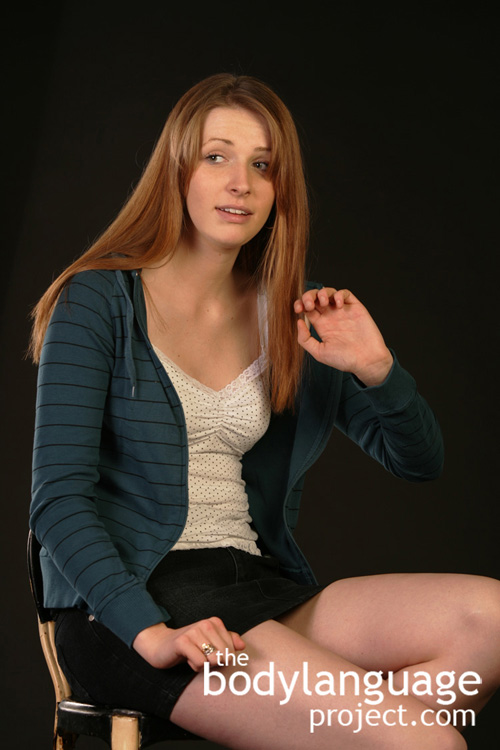Nonverbal Meaning of Arms Up Posture
Synonym(s): V-posture, Victor Stance.
Description: a) It is done usually quickly and short in duration where the arms are thrust stiffly upward into the sky.
In One Sentence: Arms up is an expansive posture often associated with victory and is used by people to demonstrate their desire to be noticed and acknowledged for successes.
How To Use it: Use this posture to claim accolades in dominance encounters. This posture is effectively used in sports to show that one has scored a goal and is to be identified as a person to be admired. Use this posture when you wish to claim the pride, dominance, and leadership that come with winning.
Context: General.
Verbal Translation: “I’m right here and I scored a goal, that was me that did it. I’m right here!”
Variant: See Arms Forward.
Cue In Action: a) After scoring a goal, the hockey player quickly shot his arms up in celebration. b) To grab the attention of the teacher, the student raised her hand to ask a question – she wanted to be noticed.
Meaning and/or Motivation: A gravity defying nonverbal cue done in triumph or victory such as winning a match or scoring a goal. It is done usually quickly and short in duration where the arms are thrust stiffly upward into the sky so as to draw as much attention to the victor as possible.
Alternatively, arms go up to draw attention if one does not want to disrupt others in a large group but otherwise, wants to interject with a question or statement.
Cue Cluster: Arms up can be accompanied with loud screams of excitement, jumping up and down to defy gravity further, fist pumping, dancing, etc.
Body Language Category: Gravity defying body language, Automatic gesture, Expansive movements, High confidence body language, Excited body language.
Resources:
Tracy, J. L., & Matsumoto, D. (2008). The spontaneous expression of pride and shame: Evidence for biologically innate nonverbal displays. Proceedings from the National Academy of Sciences, 105(33), 11655–11660.
Tracy, J. L., & Robins, R. W. (2007). The prototypical pride expression: Development of a nonverbal behavior coding system. Emotion, 7(4), 789–801.
Matsumoto, David, Hyi Sung Hwang. Evidence For A Nonverbal Expression Of Triumph. Evolution and Human Behavior, 2012; 33 (5): 520-529. http://bodylanguageproject.com/articles/athletes-first-reaction-to-triumph-is-body-language-dominance-display/
Matsumoto, D., & Willingham, B. (2006). The thrill of victory and the agony of defeat: Spontaneous expressions of medal winners of the 2004 Athens Olympic Games. Journal of Personality and Social Psychology, 91(3), 568–581.
Mouterde, S. C., Duganzich, D. M., Molles, L. E., Helps, S., Helps, R., & Waas, J. R. (2012). Triumph displays inform eavesdropping little blue penguins of new dominance asymmetries. Animal Behaviour, 83, 605–611.
Gorkan Ahmetoglu, Viren Swami. Do Women Prefer “Nice Guys?” The Effect Of Male Dominance Behavior On Women’s Ratings. Social Behavior And Personality, 2012; 40(4), 667-672.
http://bodylanguageproject.com/articles/how-to-significantly-increase-male-attractiveness-with-simple-body-language-nice-guys-finish-last-once-again/
Hyisung C. Hwang, David Matsumoto. Dominance threat display for victory and achievement in competition context. Motivation and Emotion. 2014. 38(2): 206-214.
Hwang, Hyisung C. and David Matsumoto. Cultural Differences in Victory Signals of Triumph Cross-Cultural Research. SAGE Publications 2014. 48(2):177– 191.
http://bodylanguageproject.com/articles/culture-nonverbal-triumph/

